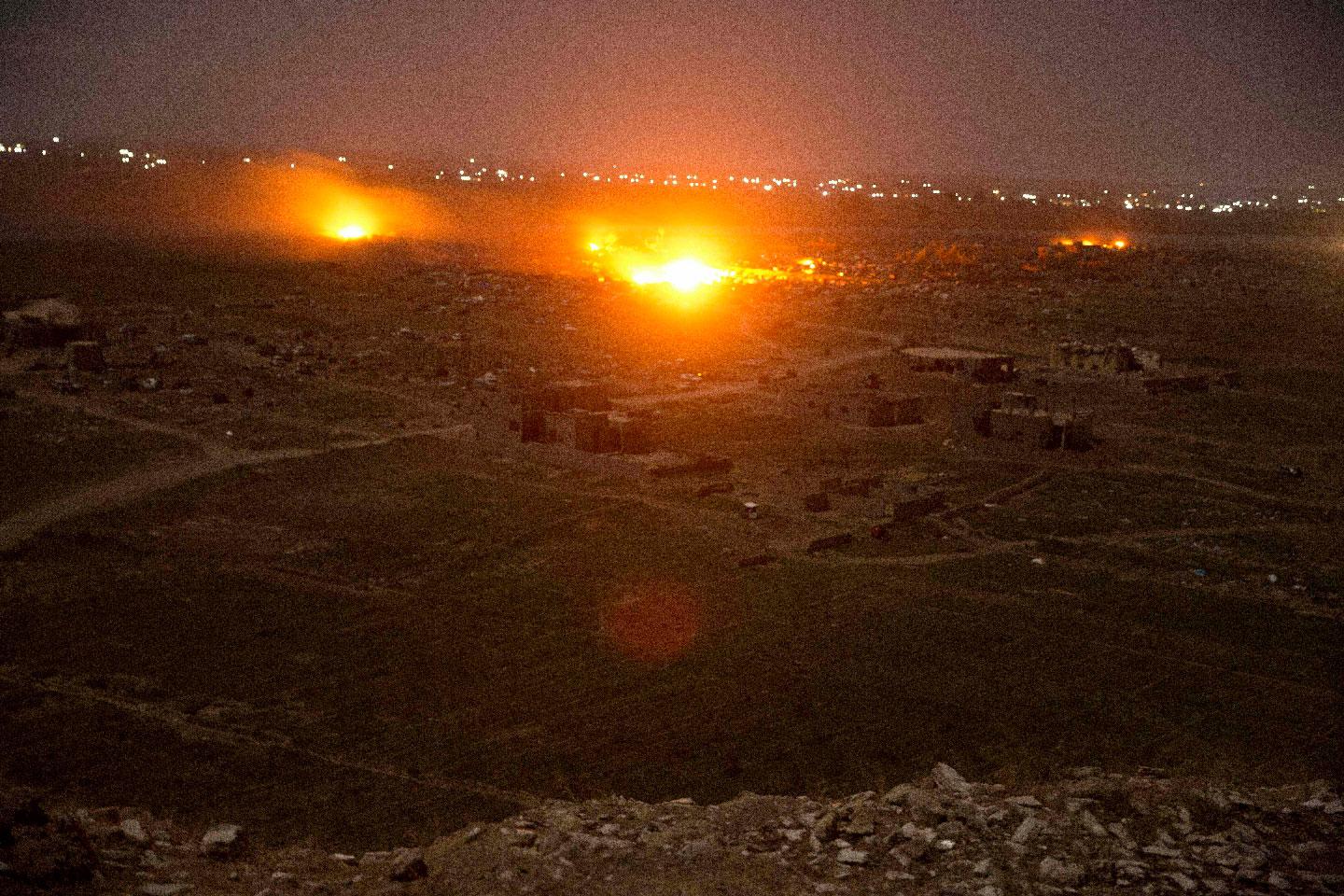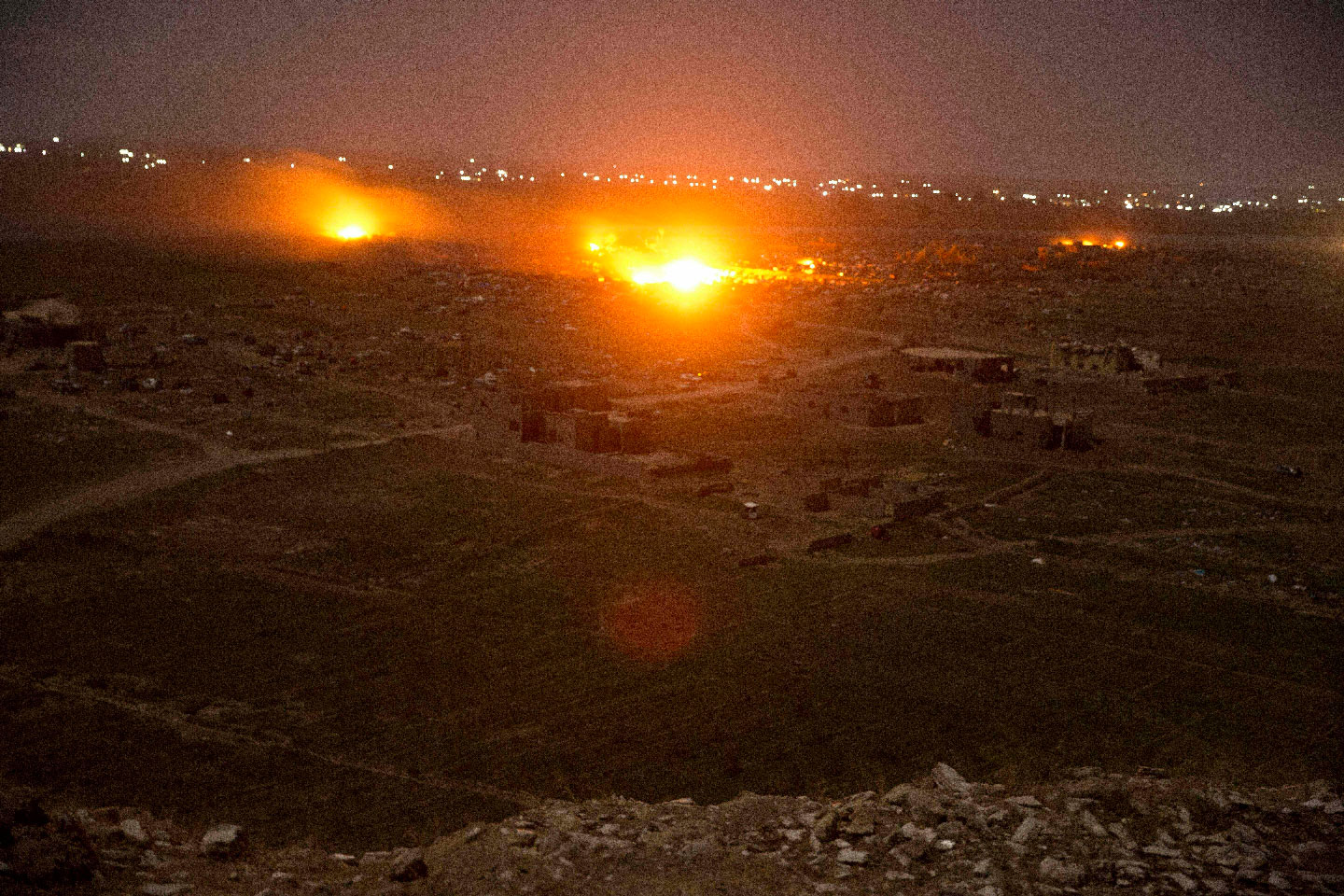Kurdish forces capture suspects tied to US deaths in Syria
DAMASCUS - US-backed forces have captured Islamic State fighters tied to a January suicide bombing in Syria that killed four Americans, US officials say, generating concrete leads for Washington about the deadliest attack to date there against US personnel.
Nineteen people including four American personnel were killed in the January 16 suicide bombing claimed by the Islamic State group in the northern Syrian city of Manbij.
The US Department of Defense had previously reported only two American personnel killed in combat in Syria, in separate incidents.
The four Americans killed were two soldiers, a civilian defence department employee and a naturalized US citizen working as a civilian interpreter for a US contractor.
A spokesman for the Kurdish-led Syrian Democratic Forces said that several suspects have been detained over the Manbij bombing.
"A group of suspects believed to be involved in (the) January 16 Manbij bombing that killed several US and SDF servicemen were captured following technical surveillance by our forces," Mustefa Bali said in English on Twitter.
The spokesman's comments came as his force advanced against the jihadists in eastern Syria, confining holdout fighters to a tiny slither in the village of Baghouz on the banks of the Euphrates River.
A US official said the number of people detained was in the "single digits." A second official said there were several "initial detentions" made in February, without offering a specific number. The detentions have not been previously reported.
"Those initial detentions have provided some leads and opportunities that we are continuing to exploit," the second official said, speaking on condition of anonymity and declining to offer additional details.
"The investigation is ongoing as are efforts to bring all of those terrorists responsible to justice."
The attack was the worst single incident involving US personnel in Syria since they deployed on the ground there in 2015 and took place at a cafe in the town of Manbij, which was controlled by a militia allied to US-backed Kurdish forces.
Run by a Washington-backed town council since the US-led coalition and its ground partners pushed out jihadists in 2016, Manbij has been a realm of relative quiet.
The town was considered sufficiently secure that a group of top US military commanders and lawmakers strolled through its market without body armour last summer.
The bombing occurred nearly a month after President Donald Trump confounded his own national security team and allies with a surprise decision on Dec. 19 to withdraw all 2,000 US troops from Syria, declaring Islamic State had been defeated there.
Critics seized on the killings as clear evidence that the Islamic State still posed a threat.
Trump backtracked in February, agreeing to leave a small US presence to help keep pressure on Islamic State during what the US military believes will be a critical stabilization phase in Syria. The United States is seeking contributions from allies including Britain and France to remain in Syria.
Insurgency threat
The Kurdish-led force on Sunday said at least 520 IS fighters have been captured in "special operations" by the SDF since January 9.
An additional 5,000 jihadists who have fled their last redoubt have been detained over the same period, it said.
After sweeping across swathes of Syria and Iraq in 2014, the IS jihadists' cross-border "caliphate" has been whittled down by multiple offensives to the tiny embattled enclave in Baghouz.
The group's Baghouz pocket is tiny, wedged between the Euphrates river and a row of hills at the Iraqi border. It is crammed with vehicles and makeshift shelters and pummelled at night by artillery and air strikes.
It is the last populated area remaining to Islamic State from the third of Syria and Iraq it suddenly seized in 2014 before its cruelties and attacks brought together local and foreign countries to push it back.
Both the SDF and the US-led coalition have said the remaining Islamic State militants inside the Baghouz pocket are among its most hardened foreign operatives.
Over the past two months, more than 60,000 people have poured out of the group's dwindling enclave, nearly half of whom were surrendering supporters of Islamic State.
While the capture of Baghouz will mark a milestone in the battle against Islamic State, regional and Western officials say the group will remain a threat.
Some of its fighters hold out in the central Syrian desert and others have gone underground in Iraq to stage a series of shootings and kidnappings.
Nobody knows how many remain inside the last scrap of ground. Footage of the encampment on Monday showed large explosions there and smoke billowing overhead with the sound of gunshots.
On Monday night Islamic State released an audio recording of its spokesman, Abi al-Hassan al-Muhajer, saying the group would stay strong.
"Do you think the displacement of the weak and poor out of Baghouz will weaken the Islamic State? No," he said.
Despite the stinging defeats it has suffered, IS has proved it is still capable of carrying out deadly attacks using hideouts in the sprawling desert or sleeper cells in the towns.
The US military has warned that Islamic State may still count tens of thousands of fighters, dispersed throughout Iraq and Syria, with enough leaders and resources to present a menacing insurgency in the months ahead.
The Pentagon's own internal watchdog released a report last month saying Islamic State remained an active insurgent group and was regenerating functions and capabilities more quickly in Iraq than in Syria.
"Absent sustained (counterterrorism) pressure, ISIS could likely resurge in Syria within six to 12 months and regain limited territory," the report from the Pentagon's inspector general said. The report, citing information from US Central Command, said Islamic State would portray the withdrawal as a "victory" and conduct attacks on American personnel during the pullout process.
A report by United Nations Secretary-General Antonio Guterres warned that Islamic State has transformed into a covert network, but is still a threat with centralized leadership, up to $300 million at its disposal and thousands of fighters. It said the group was interested in attacking aviation and using chemical, biological, radiological and nuclear materials and that there were up to 18,000 Islamic State militants in Iraq and Syria, including up to 3,000 foreign fighters.
The conflict in Syria entered its ninth year last week, and the aid crisis spurred by the dying days of the IS "caliphate" compounded an already bleak humanitarian picture.
Thousands of ghost-like people who have streamed out of Baghouz now fill overcrowded camps and prisons run by the Kurds further north.
The 70,000 people crammed into the biggest camp -- Al-Hol -- include more than 40,000 children, of dozens of different nationalities.


